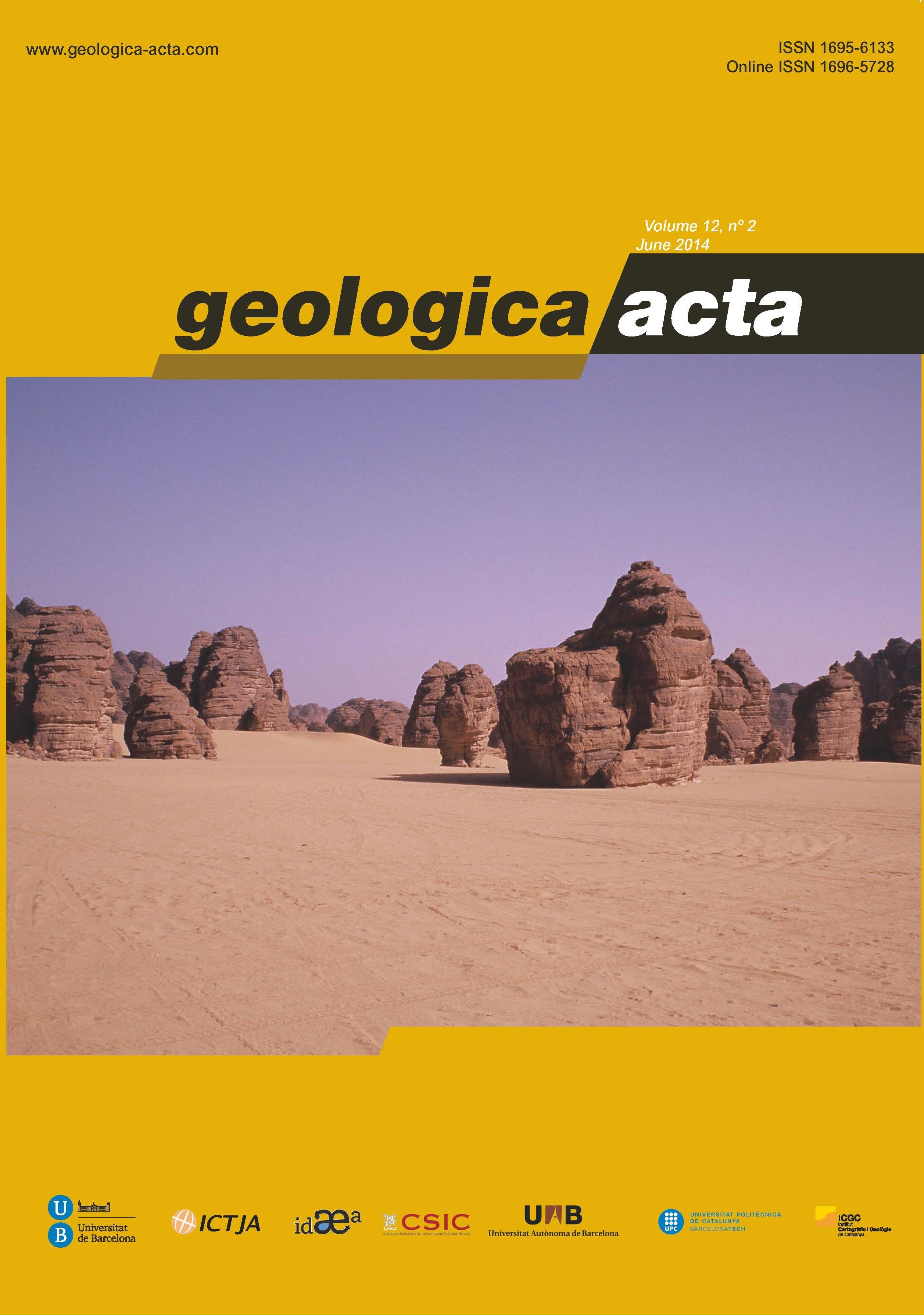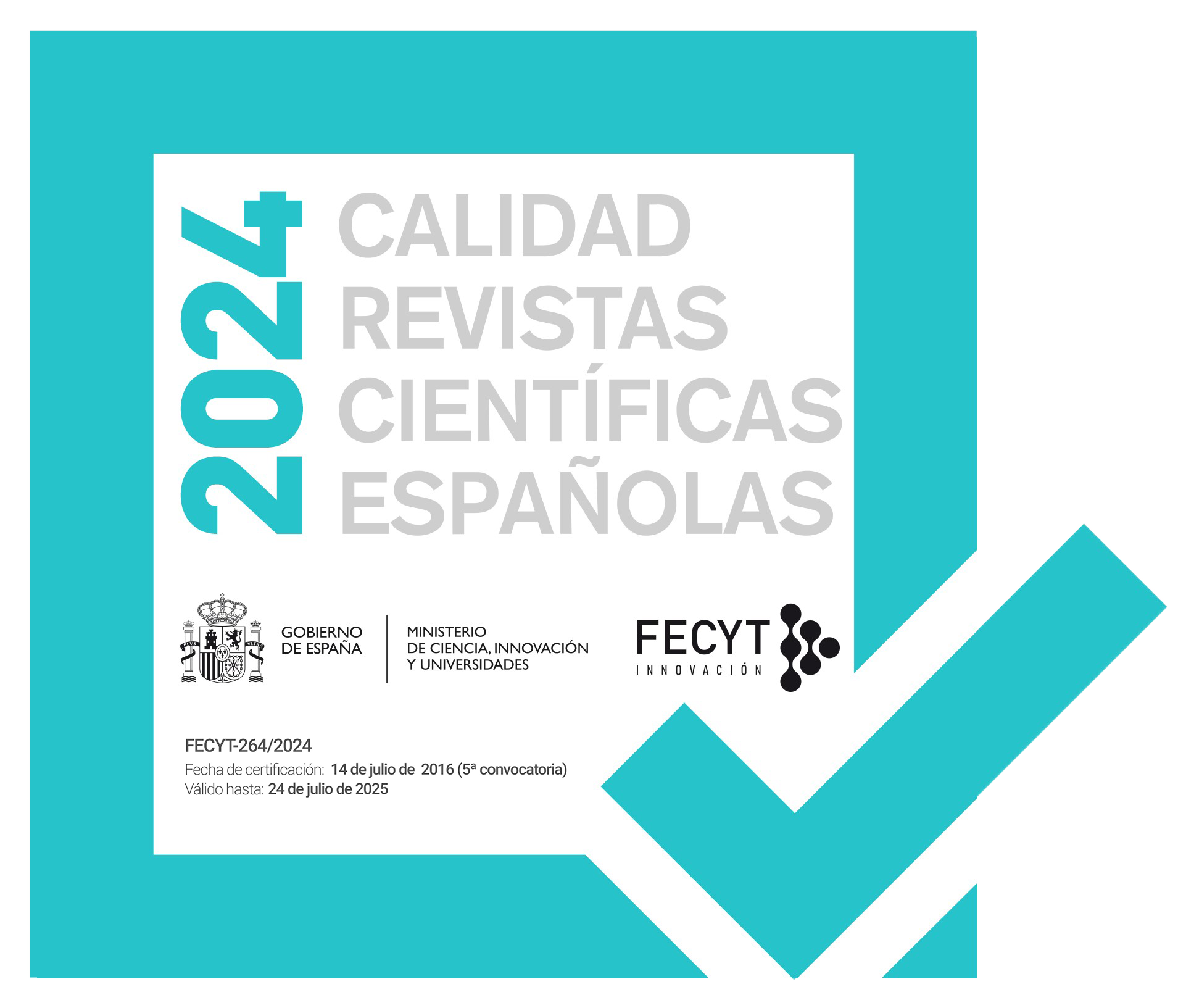European ornithomimosaurs (Dinosauria, Theropoda): an undetected record
DOI:
https://doi.org/10.1344/105.000002083Keywords:
Dinosauria, Theropoda, Ornithomimosauria, Early Cretaceous, Europe, PalaeogeographyAbstract
Early Cretaceous ornithomimosaurian theropod dinosaurs have been reported from various localities in Asia, whereas they remain poorly represented and extremely rare in North America, Africa and Europe. So far, the only known European ornithomimosaur is Pelecanimimus from the Barremian of Spain. The recent discovery in southwestern France of the Angeac bone bed, which has yielded several hundred ornithomimosaur bones, sheds new light on the ornithomimosaurian fossil record. Based on this new material, we re-evaluate here the systematic position of various isolated theropod bones from the Wealden of England, including historical taxa of uncertain affinities. Based on a unique combination of derived characters, Thecocoelurus and Valdoraptor are linked to the Angeac taxon but are considered to be nomina dubia. Valdoraptor from the Valanginian of West Sussex appears to be the oldest known ornithomimosaur together with the contemporaneous Nqwebasaurus from South Africa. Ornithomimosaurs were a common component of the Early Cretaceous European dinosaur fauna. Their presence in Spain, France and England further strengthens the palaeobiogeographic affinities of the European fossil biota with that of Asia during this period.References
Agnolin, F.L., Martinelli, A.G., 2007. Did oviraptorosaurs (Dinosauria; Theropoda) inhabit Argentina? Cretaceous Research, 28, 785-790.
Allain, R., Vullo, R., Leprince, A., Néraudeau., D., Tournepiche, J.-F., 2011. An ornithomimosaur-dominated bone bed from the Early Cretaceous of southern France. 71st Meeting of the Society of Vertebrate Paleontology, Las Vegas, Program and Abstracts. Journal of Vertebrate Paleontology (Supplement online), 61.
Allain, R., Xaisanavong, T., Richir, P., Khentavong, B., 2012. The first definitive Asian spinosaurid (Dinosauria: Theropoda) from the Early Cretaceous of Laos. Naturwissenschaften, 99, 369-377.
Andres, B., Ji, Q., 2006. A new species of Istiodactylus (Pterosauria, Pterodactyloidea) from the Lower Cretaceous of Liaoning, China. Journal of Vertebrate Paleontology, 26, 70-78.
Barrett, P.M., 2005. The diet of ostrich dinosaurs (Theropoda: Ornithomimosauria). Palaeontology, 48, 347-358.
Barsbold, R., Perle, A., 1984. On first new find of a primitive ornithomimosaur from the Cretaceous of the MPR. Paleontologicheskiy Zhurnal, 2, 121-123.
Bonaparte, J.F., 1996. Cretaceous tetrapods of Argentina. Münchner Geowissenschaftliche Abhandlungen, Reihe A 30, 73-130.
Brochu, C. 2003. Osteology of Tyrannosaurus rex: Insights from a nearly complete skeleton and high-resolution computed
tomographic analysis of the skull. Society of Vertebrate Paleontology Memoir, 7, 1-138.
Buffetaut, E., Suteethorn, V., Le Loeuff, J., Khansubha, S., Tong, H., Wongko, K., 2005. The Dinosaur fauna from the Khok Kruat Formation (Early Cretaceous) of Thailand. Proceedings of the International Conference on Geology, Khon Kaen (Thailand), Geotechnology and Mineral Resources of Indochina (GEOINDO), 575-581.
Buffetaut, E., Suteethorn, V., Tong, H., 2009. An early ‘ostrich dinosaur’ (Theropoda: Ornithomimosauria) from the Early Cretaceous Sao Khua Formation of NE Thailand. In: Buffetaut, E., Cuny, G., Le Loeuff, J., Suteethorn, V. (eds.). Late Palaeozoic and Mesozoic Ecosystems in SE Asia. London, Geological Society, 315 (Special Publications), 229-243.
Carrano, M.T., Sampson, S.D., Forster, C.A., 2002. The osteology of Masiakasaurus knopfleri, a small abelisauroid (Dinosauria: Theropoda) from the Late Cretaceous of Madagascar. Journal of Vertebrate Paleontology, 22, 510-534.
Charig, A.J., Milner, A.C., 1997. Baryonyx walkeri, a fish-eating dinosaur from the Wealden of Surrey. Bulletin of the Natural History Museum London, 53, 11-70.
Choiniere, J.N., Forster, C.A., De Klerk, W.J., 2012. New information on Nqwebasaurus thwazi, a coelurosaurian theropod from the Early Cretaceous Kirkwood Formation in South Africa. Journal of African Earth Sciences, 71-72, 1-17.
Cuenca-Bescós, G, Canudo, J.I., 2003. A new gobiconodontid mammal from the Early Cretaceous of Spain and its palaeogeographic implications. Acta Palaeontologica Polonica, 48, 575-582.
De Klerk, W.J., Forster, C.A., Sampson, S.D., Chinsamy, A., Ross, C.F., 2000. A new coelurosaurian dinosaur from the Early Cretaceous of South Africa. Journal of Vertebrate Paleontology, 20, 324-332.
Delvene, G., Munt, M., Sender, L.M., 2011. Iberanaia iberica: The first record of the Trigonioidoidea Bivalvia: Unionoida from the Lower Cretaceous of Teruel, Spain. Cretaceous Research, 32, 591-596.
Galton, P.M., 1973. A femur of a small theropod dinosaur from the Lower Cretaceous of England. Journal of Paleontology, 47, 996-997.
Galton, P.M., Molnar, R.E., 2005. Tibiae of small theropod dinosaurs from Southern England: from the Middle Jurassic of Stonesfield near Oxford and the Lower Cretaceous of the Isle of Wight. In: Carpenter, K. (ed.). The carnivorous dinosaurs. Bloomington and Indianapolis, Indiana University Press, 3-22.
Gilmore, C.W., 1920. Osteology of the carnivorous Dinosauria in the United States National Museum, with special reference
to the genera Antrodemus (Allosaurus) and Ceratosaurus. Bulletin of the American National Museum, 110, 1-154.
Gomez, B., Bamford, M., Martínez-Delclòs, X., 2002. Lower Cretaceous plant cuticles and amber (Kirkwood Formation, South Africa). Comptes Rendus Palevol, 1, 83-87.
Holtz, T.R., Molnar, R.E., Currie, P.J., 2004. Basal Tetanurae. In: Weishampel, D.B., Dodson, P., Osmólska, H. (eds.). The Dinosauria. Berkeley, University of California Press, 2nd edition, 71-110.
Huene, F. von, 1923. Carnivorous Saurischia in Europe since the Triassic. Bulletin of the Geological Society of America, 34, 449-458.
Ji, Q., Norell, M.A., Makovicky, P.J., Gao, K.-Q., Ji, S., Yuan, C., 2003. An early ostrich dinosaur and implications for ornithomimosaur phylogeny. American Museum Novitates, 3420, 1-19.
Jin, L., Chen, J., Godefroit, P., 2012. A new basal ornithomimosaur (Dinosauria: Theropoda) from the Early Cretaceous Yixian Formation, Northeast China. In: Godefroit, P. (ed.). Bernissart dinosaurs and Early Cretaceous terrestrial ecosystems. Bloomington, Indiana University Press Association, 466-487.
Kirkland, J.I., Britt, B.B., Whittle, C.H., Madsen, S.K., Burge, D.L., 1998. A small coelurosaurian theropod from the Yellow Cat Member of the Cedar Mountain Formation (Lower Cretaceous, Barremian) of eastern Utah. Bulletin of the New Mexico Museum of Natural History and Science, 14, 239-248.
Kirkland, J., Zanno, L., Deblieux, D., Smith, D., Sampson, S., 2004. A new, basal-most therizinosauroid (Theropoda: Maniraptora) from Utah demonstrates a Pan-Laurasian distribution for Early Cretaceous (Barremian) therizinosauroids. Journal of Vertebrate Paleontology, 24 (supplement to 3), 78A.
Kobayashi, Y., Lu, J.-C., Dong, Z.-M., Barsbold, R., Azuma, Y., Tomida, Y., 1999. Herbivorous diet in an ornithomimid dinosaur. Nature, 402, 480-481.
Lauprasert, K., Cuny, G., Buffetaut, E., Thirakhupt, K., Suteethorn, V., 2007. Siamosuchus phuphokensis, a new goniopholidid from the Early Cretaceous (ante-Aptian) of northeastern Thailand. Bulletin de la Société Géologique de France, 178, 201-216.
Lauprasert, K., Laojumpon, C., Saenphala, W., Cuny, G., Thirakhupt, K., Suteethorn, V., 2011. Atoposaurid crocodyliforms from the Khorat Group of Thailand: first record of Theriosuchus from Southeast Asia. Paläontologische Zeitschrift, 85, 37-47.
Le Loeuff, J., 1997. Biogeography. In: Currie, P.J., Padian, K. (eds.). Encyclopedia of Dinosaurs, Academic Press, 51–56.
Le Loeuff, J, Läng, E., Cavin, L., Buffetaut, E., 2012. Between Tendaguru and Bahariya: on the age of the Early Cretaceous Dinoaurs sites from the Continental Intercalaire and other African formations. Journal of Stratigraphy, 36, 486-502.
Long, J.A., Molnar, R.E., 1998. A new Jurassic theropod dinosaur from Western Australia. Records of the Western Australian
Museum, 19, 121-129.
Lydekker, R., 1888. Catalogue of the fossil Reptilia and Amphibia in the British Museum. London, British Museum Natural History, 309pp.
Lydekker, R., 1889. Note on some points in the nomenclature of fossil reptiles and amphibians, with preliminary notices of two new species. Geological Magazine (Decade 3), 6, 325-326.
Lydekker, R., 1891. On certain ornithosaurian and dinosaurian remains. Quarterly Journal of the Geological Society of London, 47, 41-44.
Makovicky, P.J., Apesteguía, S., Agnolin, F.L., 2005. The earliest dromaeosaurid theropod from South America. Nature, 437,
-1011.
Makovicky, P.J., Li, D., Gao, K.-Q., Lewin, M., Erickson, G.M., Norell, M.A., 2010. A giant ornithomimosaur from the Early Cretaceous of China. Proceedings of the Royal Society B, 277, 191-198.
Mateus, O., Dyke, G.J., Motchurova-Dekova, N., Kamenov, G.D., Ivanov, P., 2010. The first record of a dinosaur from Bulgaria. Lethaia, 43, 88-94.
Naish, D., 2000. A small, unusual theropod (Dinosauria) femur from the Wealden Group (Lower Cretaceous) of the Isle of Wight, England. Monatshefte, Neues Jahrbuch für Geologie und Paläontologie, 2000, 217-234.
Naish, D., 2011. Theropod dinosaurs. In: Batten, D.J. (ed.). English Wealden Fossils. London, The Palaeontological Association, 526-559.
Naish, D., Martill, D.M., 2002. A reappraisal of Thecocoelurus daviesi (Dinosauria: Theropoda) from the Early Cretaceous of the Isle of Wight. Proceedings of the Geologists’ Association, 113, 23-30.
Naish, D., Martill, D.M., 2007. Dinosaurs of Great Britain and the role of the Geological Society of London in their discovery:
basal Dinosauria and Saurischia. Journal of the Geological Society, 164, 493-510.
Naish, D., Hutt, S., Martill, D.M., 2001. Saurischian dinosaurs 2: theropods. In: Martill, D.M., Naish, D. (eds.). Dinosaurs of the Isle of Wight. London, The Palaeontological Association, 242-309.
Néraudeau, D., Allain, R., Ballèvre, M., Batten, D.J., Buffetaut, E., Colin, J.-P., Dabard, M.-P., Daviero-Gomez, V., El Albani, A., Gomez, B., Grosheny, D., Le Lœuff, J., Leprince, A., MartínClosas, C., Masure, E., Mazin, J.-M., Philippe, M., Pouech, J., Tong, H., Tournepiche, J.-F., Vullo, R., 2012. The Hauterivian–Barremian lignitic bone bed of Angeac (Charente, SW France): stratigraphical, palaeobiological and palaeogeographical implications. Cretaceous Research, 37, 1-14.
Norman, D.B., 1990. Problematic Theropoda: “Coelurosaurs”. In: Weishampel, D.B., Dodson, P., Osmolska, H. (eds.). The Dinosauria. Berkeley, University of California Press, 280-305.
O’Connor, P.M., 2007. The postcranial axial skeleton of Majungasaurus crenatissimus (Theropoda: Abelisauridae) from the Late Cretaceous of Madagascar. In: Sampson, S.D., Krause, D.W. (eds.). Majungasaurus crenatissimus (Theropoda: Abelisauridae) from the Late Cretaceous of Madagascar. Society of Vertebrate Paleontology, 8 (Memoir), 127-162.
Olshevsky, G., 1991. A Revision of the Parainfraclass Archosauria Cope, 1869, Excluding the Advanced Crocodylia. San Diego (California), Publications Requiring Research, 196pp.
Owen, R., 1858. Monograph on the fossil Reptilia of the Wealden and Purbeck Formations. Part IV. Dinosauria (Hylaeosaurus). Palaeontological Society Monographs, 10, 1-26.
Pérez-Moreno, B.P., Sanz, J.L., Buscalioni, A.D., Moratalla, J.J., Ortega, F.J., Rasskin-Gutman, D., 1994. A unique multitoothed ornithomimosaur dinosaur from the Lower Cretaceous of Spain. Nature, 370, 363-367.
Rauhut, O.W.M., 2003. The interrelationships and evolution of basal theropod dinosaurs. Special Papers in Palaeontology, 69, 1-215.
Russell, D.A., 1993. The role of Central Asia in dinosaurian biogeography. Canadian Journal of Earth Sciences, 30, 2002-2012.
Seeley, H.G., 1888. On Thecospondylus daviesi (Seeley), with some remarks on the classification of the Dinosauria. Quarterly Journal of the Geological Society of London, 44, 79-86.
Senter, P., 2007. A new look at the phylogeny of Coelurosauria (Dinosauria: Theropoda). Journal of Systematic Palaeontology, 5, 429-463.
Sha, J., 2010. Historical distribution patterns of trigonioidids (non-marine Cretaceous bivalves) in Asia and their palaeogeographic significance. Proceedings of the Royal Society B, 277, 277-283.
Sues, H.D., 1997. On Chirostenotes, a Late Cretaceous oviraptorosaur (Dinosauria, Theropoda) from the western North America. Journal of Vertebrate Paleontology, 17, 698-716.
Welles, S.P., Long, R.A., 1974. The tarsus of theropod dinosaurs. Annals of the South African Museum, 64, 191-218.
Zanno, L.E., Makovicky, P.J., 2010. Herbivorous ecomorphology and specialization patterns in theropod dinosaur evolution. Proceedings of the National Academy of Sciences, 108, 232-237.
Downloads
Published
Issue
Section
License

This work is licensed under a Creative Commons Attribution-ShareAlike 4.0 International License.
Copyright
Geologica Acta is the property of the UB, GEO3BCN, IDAEA and UAB. Geologica Acta must be cited for any partial or full reproduction. Papers are distributed under the Attribution-Share Alike Creative Commons License. This license allows anyone to reproduce and disseminate the content of the journal and even make derivative works crediting authorship and provenance and distributing possible derivative works under the same or an equivalent license.
Author Rights
Authors retain the copyright on their papers and are authorized to post them on their own web pages or institutional repositories. The copyright was retained by the journal from the year 2003 until 2009. In all cases, the complete citation and a link to the Digital Object Identifier (DOI) of the article must be included.
The authors can use excerpts or reproduce illustrations of their papers in other works without prior permission from Geologica Acta provided the source of the paper including the complete citation is fully acknowledged.




